Affiliate links on Android Authority may earn us a commission. Learn more.
Samsung Galaxy S9 vs Apple iPhone X
March 7, 2018
Apple’s iPhone X came out late last year and the ninth generation of Samsung’s Galaxy S range debuted at MWC just last week. With six months between them and several similarities, which of these two behemoths is the best smartphone now? The Galaxy S9 is newest, but is it better? Let’s take a look!
We’ve spent a week with the Galaxy S9 since it was announced at Mobile World Congress. While we’ll reserve our judgments on the device until our full review, it’s very clear Apple and Samsung are growing closer with each new product launch. That’s what we’ll cover in this quick look, but we’ll update this initial comparison with a full head to head in the coming weeks!
The iPhone X is a radical change from previous iPhones and it looks set to influence the industry as much as the first iPhone. The original iPhone brought a refreshing approach to mobile devices and undeniably shaped future generations of smartphones. The iPhone X doesn’t have a lot of game-changing advancements — at least from a technological perspective. It’s mostly playing catch up, but Mobile World Congress this year showed us the iPhone X is already influencing the industry a lot.
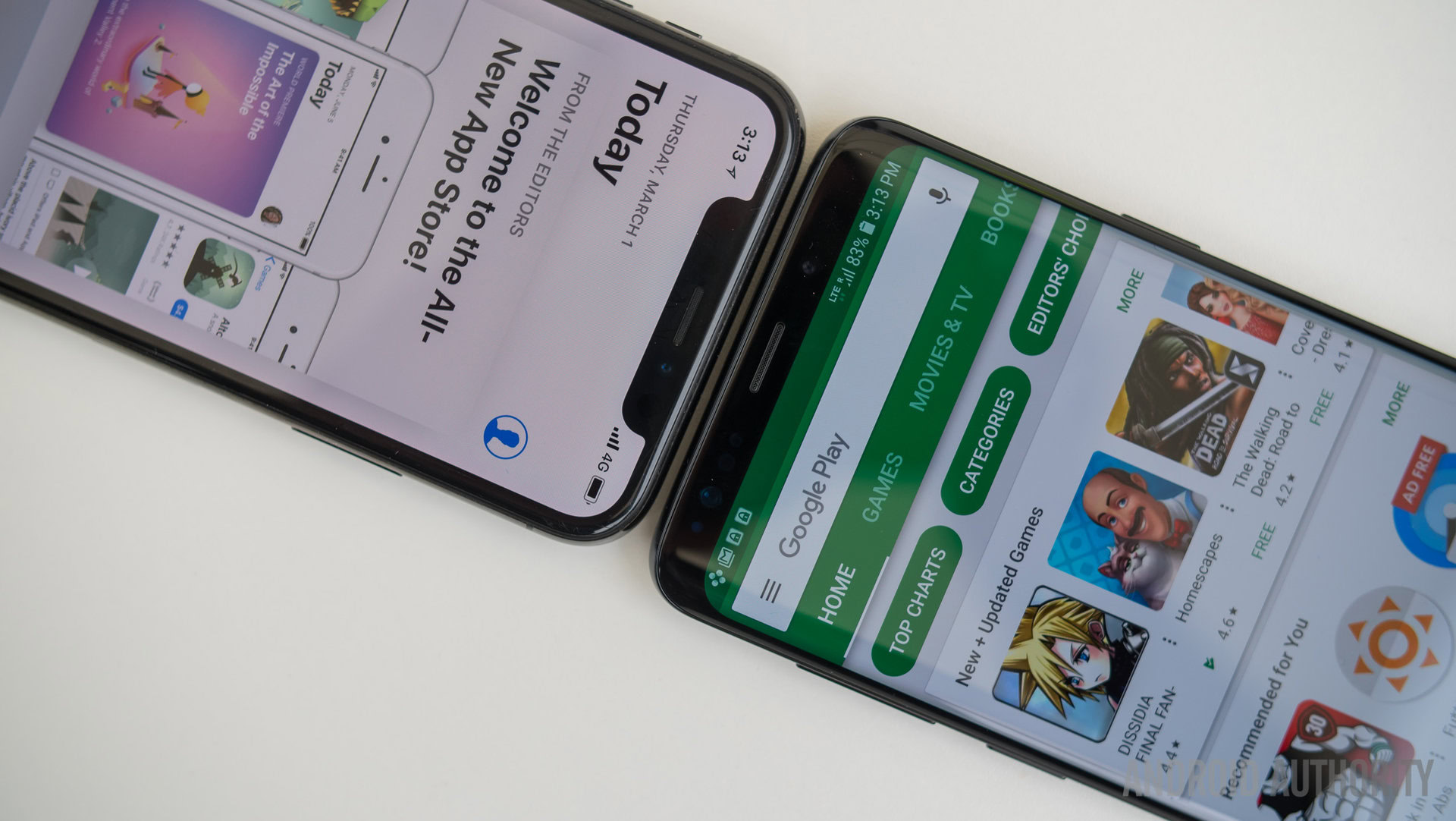
To notch or not to notch?
The saying goes “if you can’t beat them, join them,” and it seems Android OEMs are doing just that. MWC revealed several Android devices which shared a single feature in common with the iPhone X — the notch. Why anyone would want to directly copy it rather than innovate around it is beyond us. Thankfully, Samsung is playing to its own tune.
The Galaxy S9 doesn’t have a notch. It’s an iterative upgrade to be sure, rather than a revolutionary redesign. We’ve seen the same thing from Apple, Sony and others in recent years. As Android Authority‘s own Joshua Vergara put it, this isn’t so bad because there needs to be a certain familiarity between the design languages of Samsung Galaxy flagships, but I suspect there’s another reason for no major changes.
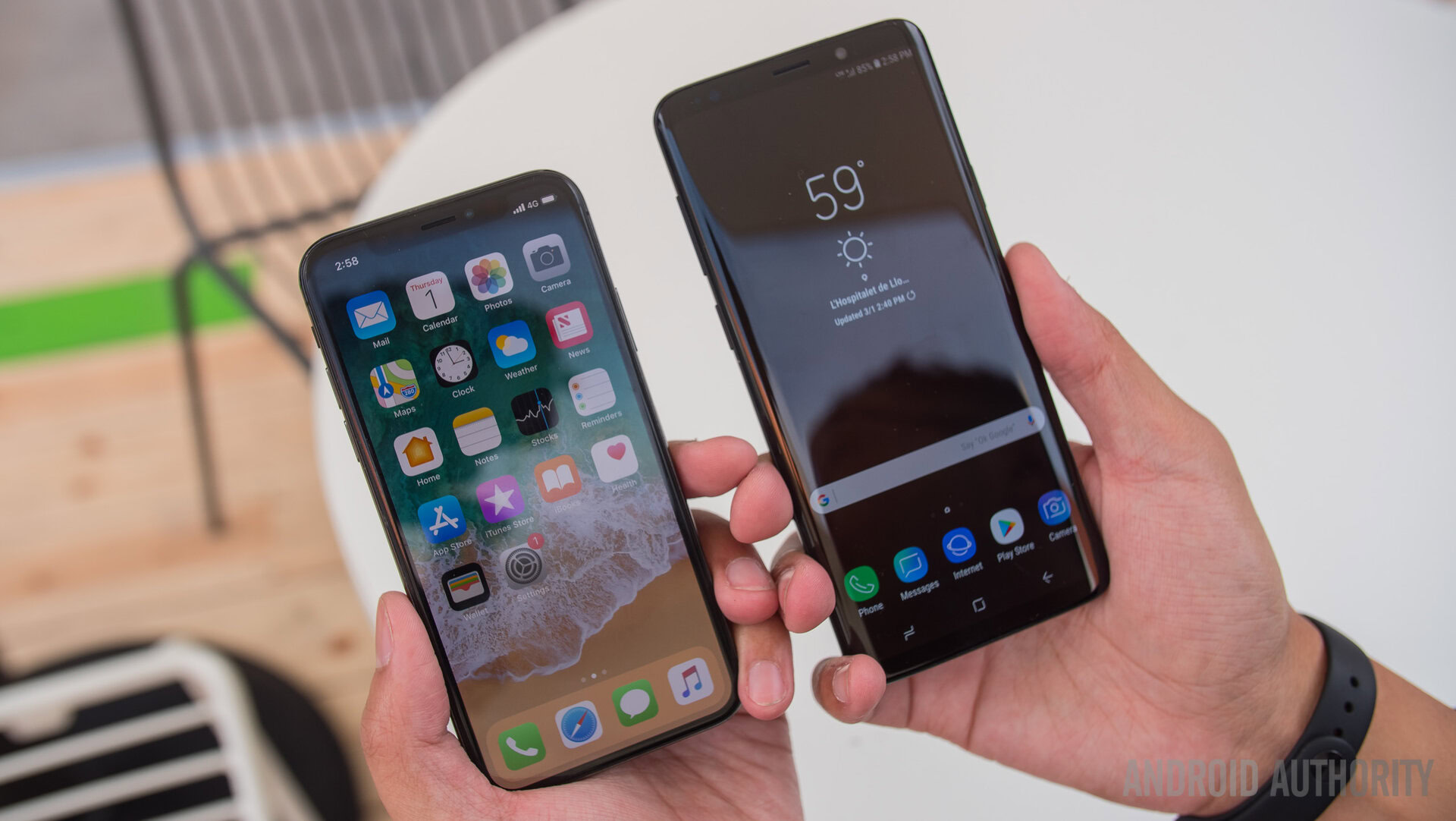
First, it’s very hard to radically iterate on an excellent smartphone like the Galaxy S8. It offered one of the most complete smartphone experiences in a long time. Samsung simply didn’t have to make many changes, other than a few tweaks based on customer feedback, to make it even greater. I think Samsung will deliver a radically different design next year. It’ll be the tenth anniversary of the original Galaxy S smartphone, and something big in honor of the momentous milestone is almost expected, just as it was with the iPhone X.
The design of both devices is somewhat indicative of each company’s overall philosophy. The iPhone X is likely the design template for where the iPhone range is going, with the notch, vertical camera, glass back, and slimmer bezels. The Galaxy S9 is more indicative of where Samsung came from, and each year the company adjusts the sharpness of the edges until it finds the perfect formula. The Galaxy S9 no longer features a display that goes right to the edge, but offers a much better in-hand experience with less risk of accidental touches and ghosting.
The iPhone and the Galaxy share one thing in common; for each company’s respective fan base, they deliver an experience that’s familiar and fully featured. The iPhone X might be different to previous iPhones, but it still feels exactly like an iPhone. The Galaxy S9, on the other hand, is very much a Galaxy through and through. Samsung essentially copied other manufacturers by moving the fingerprint sensor to the middle of the back, but in its own Galaxy way.
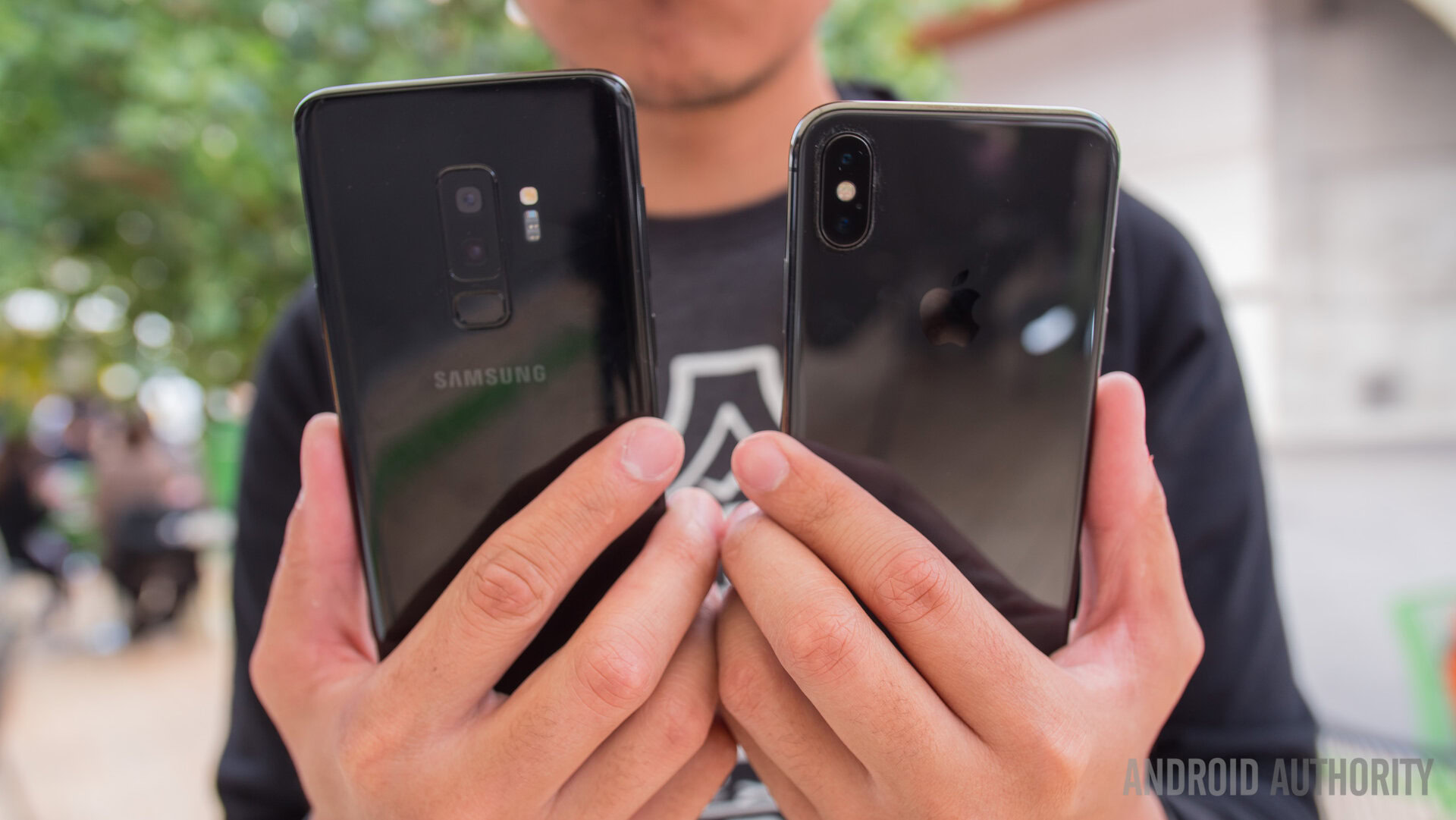
Achievement unlocked
The biggest difference between the two phones is their approach to biometric security. The Galaxy S9 brings a fingerprint sensor in a new location and works as well as previous sensors. It also comes with Intelligent Scan, Samsung’s new security feature which combines the Iris Scanner and Face Unlock features of the Galaxy S8. It doesn’t use any new hardware.
The most radical change on the iPhone X — notch aside — has to be the fingerprint sensor, or lack thereof. To accommodate the full display experience and reduce the bezels, Apple made the “courageous” decision to remove its signature Touch ID fingerprint sensor, in favor of a new biometric security system called Face ID.
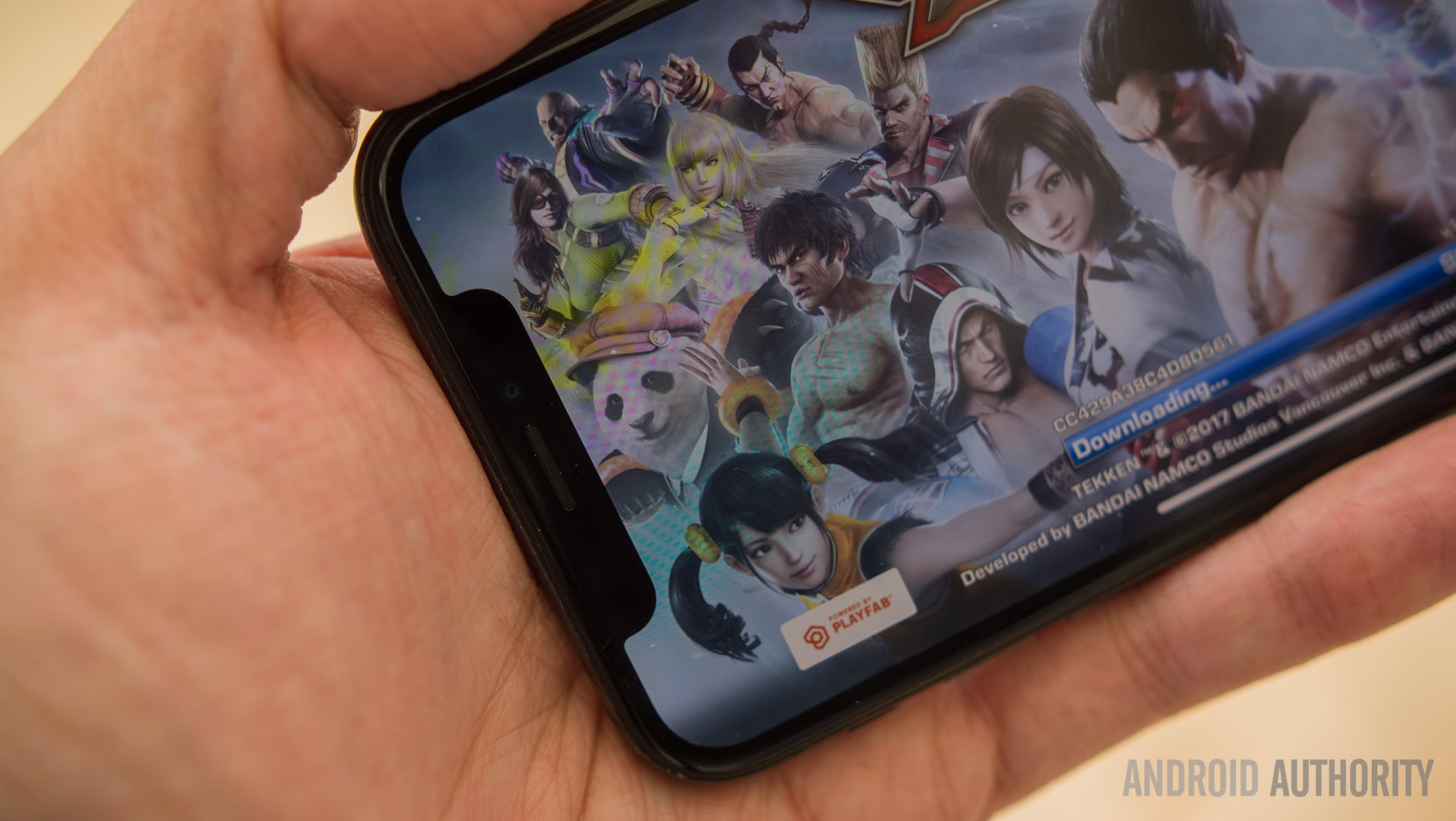
Face ID is more than just a face unlock feature like those found on many Android phones. It uses two modules to project 30,000 infrared dots onto a user’s face and then read the pattern. As unique as a fingerprint is, Face ID offers more points of unique data and can learn how a user’s face changes over time. It’s meant to be more secure than just a fingerprint, yet it has been challenged by hackers and fooled by wearing a mask.
I think the lack of Touch ID is an issue Apple will address once under-display fingerprint sensors are flawless — maybe in the next major iPhone release. At CES and during MWC we saw vivo show off this tech in two different ways, so maybe Apple’s fingerprint hiatus will only be temporary.
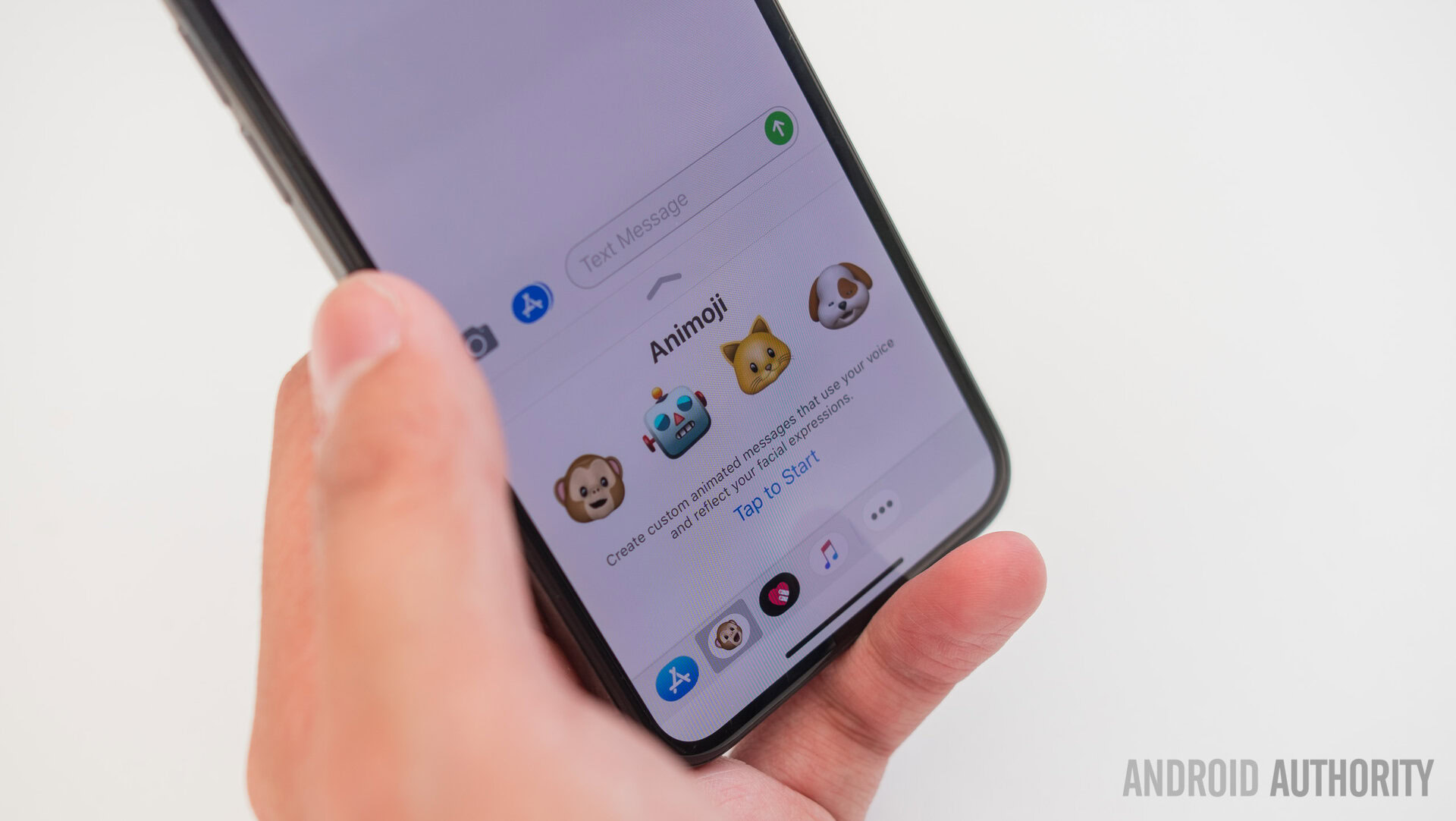
Animoji vs AR Emoji
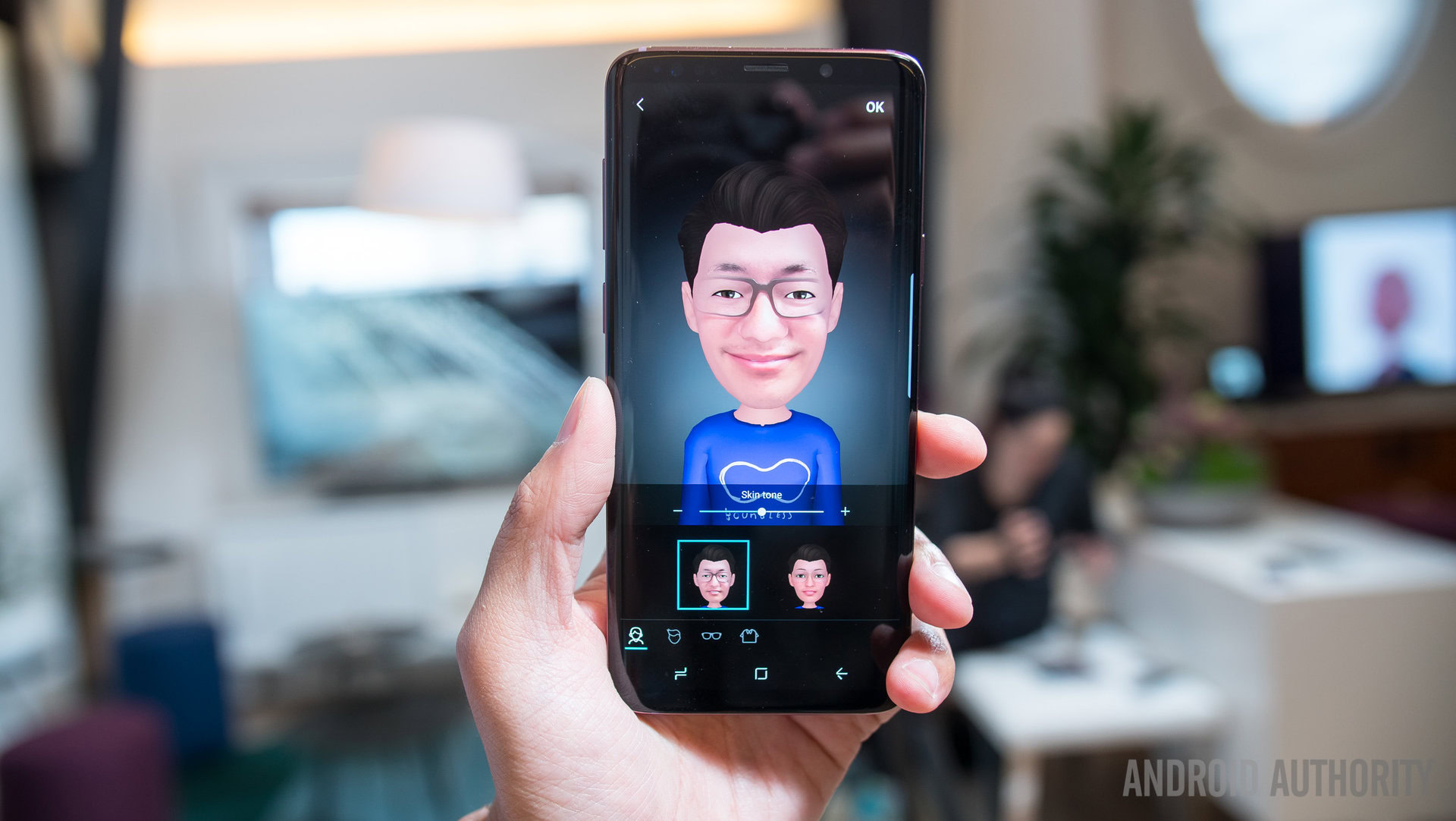
The additional modules on the iPhone X bring an added feature other than Face ID: Animoji. These cute little animations allow you to express yourself in a way previously impossible, but they have their inherent limits.
Unfortunately for Apple, Samsung was paying attention and its new AR Emoji feature on the Galaxy S9 is definitely a case of “don’t be first, be best.”
Apple’s Animoji feature set is limited, but rather cool. When it launched it offered customization and the ability to send cute message to your friends. Samsung’s AR Emoji takes this to an entirely different level, by offering the ability to create your own emoji which can be customized and saved as a preset for future use. It is also not just limited to a single app — like iMessage with Animoji — and automatically saves a whole bunch of GIFs for you to share to your heart’s content.

Dual cameras for all
The cameras also offer insight into the companies’ philosophies around imaging. Dual cameras aren’t new to either company, but this is the first time Samsung has used a dual camera in a Galaxy S flagship. The Galaxy S9 philosophy of a dual camera as a differentiator in the larger Galaxy S9 Plus is also akin to Apple’s iPhone 8 (and previous years) philosophy, which only saw the Plus variant gain a secondary camera.
Portrait mode is arguably better on the iPhone X in the default auto mode, but Samsung offers the live focus feature which allows you to adjust the bokeh both before and after taking the photo. While the dual camera is a large selling point for the iPhone X, the Galaxy S9 offers more features, which make it a worthy contender to be the camera in your pocket.
This year saw the first major upgrade to the Galaxy S camera experience since the Galaxy S7, with the introduction of dual aperture. Rather than using software to adjust the aperture like other devices, Samsung built a mechanical iris. The camera automatically picks between a f/2.4 aperture designed to let less light in — so highlights aren’t blown out in bright scenes— or a f/1.5 aperture, which is designed to let in more light, improving low light performance.
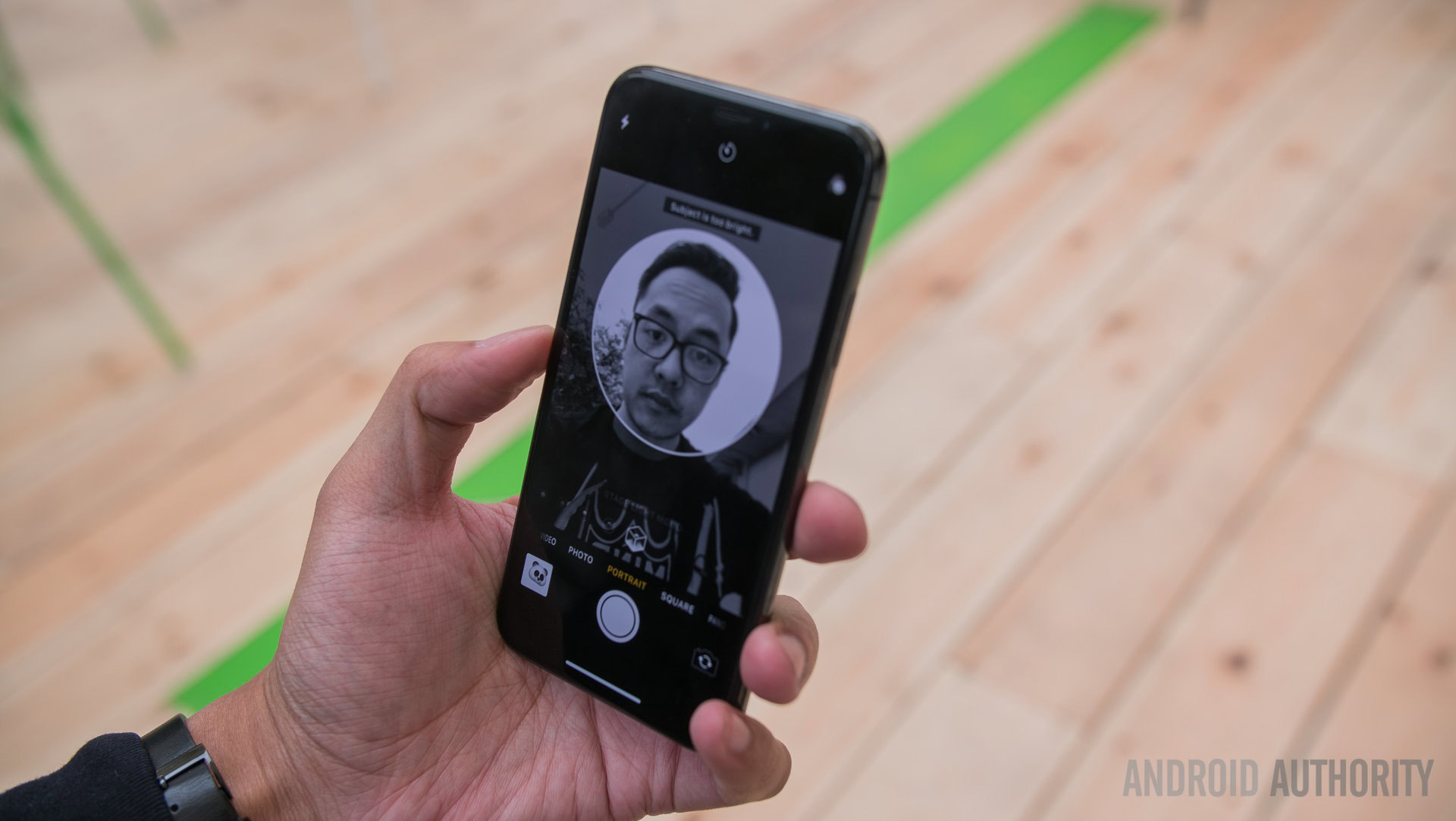
The dual aperture is joined by multi-frame image processing, which uses DRAM on the camera sensor to capture four times as many images at four times the speed. For each shot, the Galaxy S9 takes 12 images in a split second and batches them into three groups of four. In each group, the software uses the details and information from each of the four pictures for noise reduction and produces a picture. The software then does this one more time with the resulting images to create the best overall picture.
The DRAM and faster capture speed also means Samsung can now offer more advanced slow-motion video capture. Both devices offer 1080p slow-motion video capture at 240 frames per second but the Galaxy S9 also supports 720p HD video capture at 960 frames per second. This is nothing compared to the new Sony Xperia XZ2 which supports 1080p at 960 frames per second, but the Galaxy S9 has an automatic mode that makes slow-mo video capture a breeze.
Simply press record and the software will automatically detect when to enable the slow-motion part. Once recorded, it will then save the video for you, as well as several animated GIFs including the slow-mo video looped and in reverse. The resulting video can also be saved as your lock-screen wallpaper and easily shared with your friends.
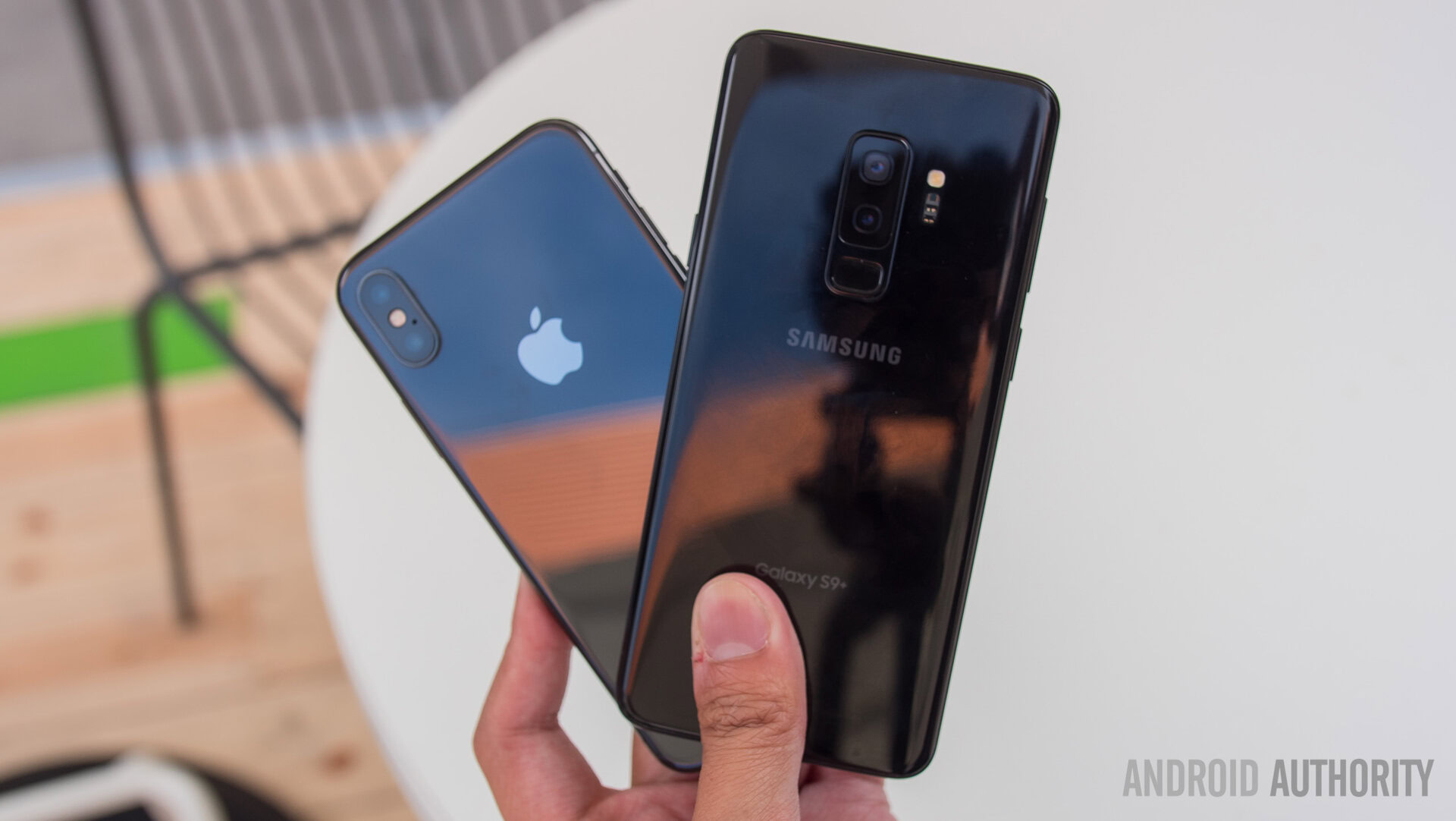
Hardware
We’ve not really discussed the hardware specs because comparing the hardware of each phone is like comparing apples and oranges. An important difference here is the two AMOLED display options on the Galaxy S9 (5.8-inch and 6.2-inch), compared to the iPhone X, which only has a 5.8-inch AMOLED display (which Samsung also makes).
| Samsung Galaxy S9/S9+ | Apple iPhone X | |
|---|---|---|
Display | Samsung Galaxy S9/S9+ 5.8- or 6.2-inch Curved Super AMOLED 2,960 x 1,440 resolution (Quad HD+) 570 or 529 ppi 18.5:9 aspect ratio | Apple iPhone X 5.8-inch Super Retina AMOLED 2,436 x 1,125 resolution 458 ppi 19.5:9 aspect ratio |
Processor | Samsung Galaxy S9/S9+ Global: 10 nm, 64-bit, octa-core Samsung Exynos 9810 (2.8 GHz quad + 1.7 GHz quad) U.S.: 10nm, 64-bit, octa-core Qualcomm Snapdragon 845 | Apple iPhone X 10nm, 64-bit, hexa-core Apple A11 Bionic (up to 2.39 GHz with 2 x Monsoon, 4 x Mistral) Apple M11 motion co-processor and Neural Engine |
GPU | Samsung Galaxy S9/S9+ ARM Mali-G72 (Exynos) Adreno 630 (Snapdragon) | Apple iPhone X Apple GPU |
RAM | Samsung Galaxy S9/S9+ 4 GB (S9) or 6 GB (S9+) | Apple iPhone X 3 GB |
Storage | Samsung Galaxy S9/S9+ 64 GB microSD expansion up to 400 GB | Apple iPhone X 64/256 GB |
Cameras | Samsung Galaxy S9/S9+ Rear (S9): Super Speed Dual Pixel 12 MP AF sensor with OIS, f/1.5 and f/2.4 apertures Rear (S9+): Dual camera with dual OIS Wide-angle: Super Speed Dual Pixel 12 MP AF sensor with OIS, f/1.5 and f/2.4 apertures Telephoto: 12 MP AF sensor, f/2.4 aperture Front: 8 MP AF sensor, f/1.7 aperture | Apple iPhone X Dual cameras: 12 MP, f/1.8 aperture, 28mm and 12 MP, f/2.4 aperture, 52mm. OIS, phase detection autofocus Front: 7 MP, f/2.2 aperture, 32mm |
Battery | Samsung Galaxy S9/S9+ 3,000 and 3,500 mAh Non-removable Fast Wired Charging compatible with QC 2.0 Fast Wireless Charging compatible with WPC and PMA | Apple iPhone X 2,716 mAh Non-removable Fast Wired Charging Qi Wireless Charging |
IP rating | Samsung Galaxy S9/S9+ IP68 | Apple iPhone X IP67 |
Connectivity | Samsung Galaxy S9/S9+ Wi-Fi 802.11 a/b/g/n/ac (2.4/5 GHz) VHT80 MU-MIMO 1024QAM Bluetooth v5.0 (LE up to 2 Mbps) ANT+ USB Type-C NFC Location: GPS, Galileo, Glonass, BeiDou | Apple iPhone X Wi-Fi 802.11 a/b/g/n/ac (2.4/5 GHz) Bluetooth v5.0 Lightning connector NFC Location: GPS, Galileo, Glonass, QZSS |
Sensors | Samsung Galaxy S9/S9+ Iris Pressure Accelerometer Barometer Fingerprint Gyro Geomagnetic Hall HR Proximity RGB Light | Apple iPhone X Face ID Infrared camera Accelerometer Barometer Gyro Proximity Compass Ambient light sensor Dot projector Flood illuminator |
Authentication | Samsung Galaxy S9/S9+ Lock type: pattern, PIN, password Biometric lock type: iris scanner, fingerprint scanner, face recognition, Intelligent Scan | Apple iPhone X Lock type: Face ID |
Audio | Samsung Galaxy S9/S9+ Stereo speakers tuned by AKG, surround sound with Dolby Atmos technology 3.5mm headphone jack | Apple iPhone X Stereo speakers No headphone jack |
Video | Samsung Galaxy S9/S9+ HDR10, 1080p at 240fps and 720p at 960fps slo-mo, 4K at 60fps | Apple iPhone X Dolby Vision/HDR10, 720p at 240fps slo-mo, 4K at 24/30/60fps, 1080p at 30fps |
Virtual reality | Samsung Galaxy S9/S9+ Gear VR with controller (SM-R325NZAXAR) Google Daydream View | Apple iPhone X No |
Software | Samsung Galaxy S9/S9+ Android 8.0 Oreo | Apple iPhone X iOS 11 |
Dimensions and weight | Samsung Galaxy S9/S9+ S(: 147.7 x 68.7 x 8.5 mm 163 g S9+: 158.1 x 73.8 x 8.5 mm 189 g | Apple iPhone X 143.6 x 70.9 x 7.7 mm 174 g |
Colors | Samsung Galaxy S9/S9+ Midnight Black, Coral Blue, Lilac Purple, Titanium Grey | Apple iPhone X Space Gray, Silver |
The iPhone X battery may appear much smaller (at 2,716 mAh) than the Galaxy S9 and S9 Plus (3,000 mAh and 3,500 mAh respectively) but Apple vertically integrates its hardware and software, allowing for similar battery life with a smaller battery size. As mentioned above, we haven’t spent enough time with the Galaxy S9 to truly know how the battery stacks up. We’ll have to wait for a full comparison before going into this further.
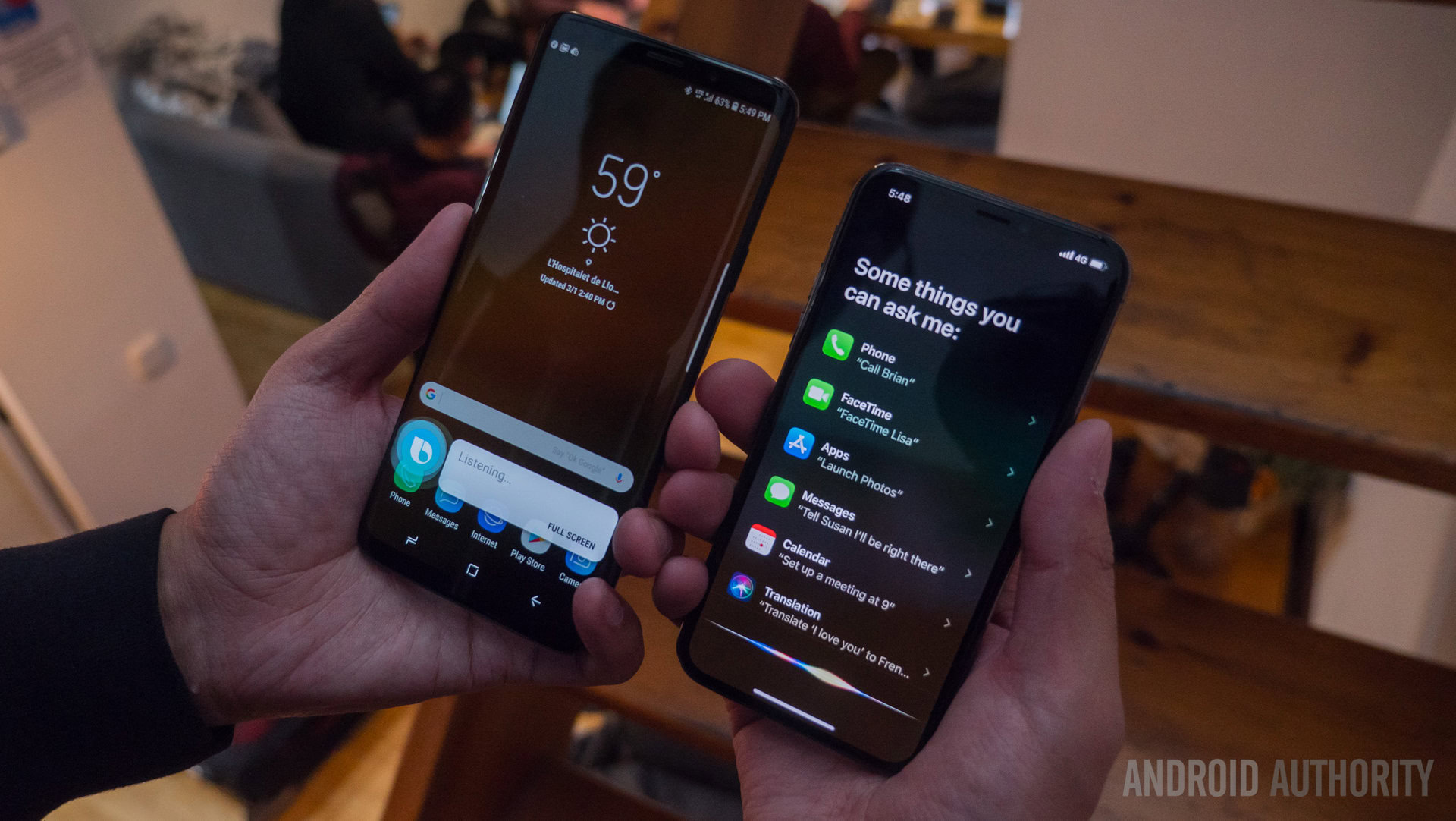
Overall, there are a few similarities between the iPhone X and the Galaxy S9 but Samsung has benefited from launching its flagship several months after Apple. Yet, with a whole year to go until the tenth anniversary of the Galaxy S and Apple due to release a new iPhone X later this year, the tables have turned. Later this year it’ll be Apple’s turn to respond and we’ll be waiting to see just how the company plans to stop the Galaxy S9 from being the best smartphone this year.
Stay tuned for our full Galaxy S9 review, as well as a full comparison between these two devices, in the coming weeks.